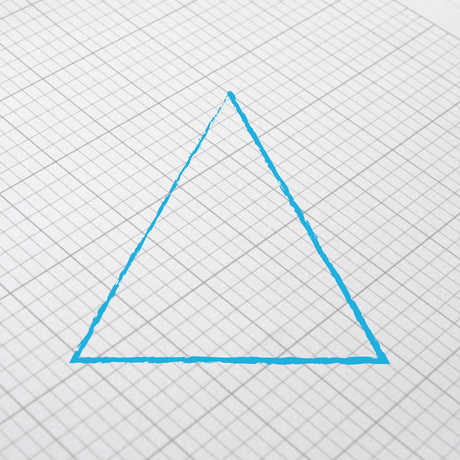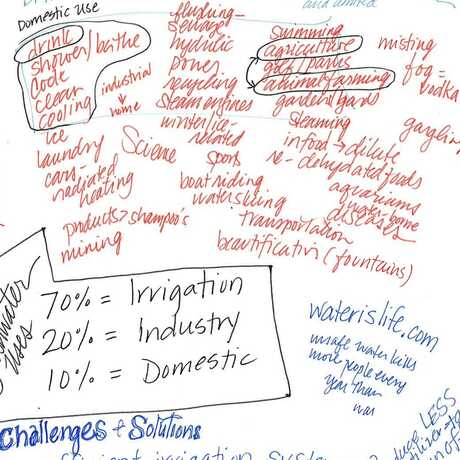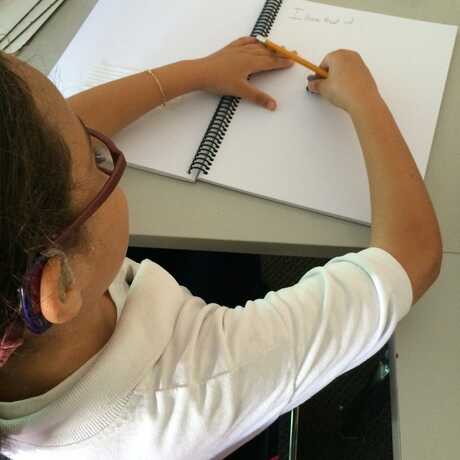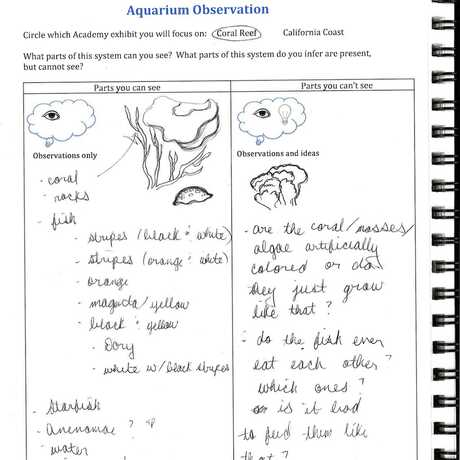

What is the difference between procedural and conceptual vocabulary, and why does it matter? Learn when it helps to introduce terms in science class, and when it might be best to wait until students have explored a scientific concept on their own. In either case, a notebook helps build one's understanding of scientific terms.
About This Guide

Below, you'll find guidance related to building science vocabulary, including:
- Which kinds of vocabulary to introduce & when
- Strategies for building understanding of procedural and conceptual vocabulary [i]
- An example from a classroom
Because we know teachers appreciate seeing the results of using these strategies, we've also created an example gallery containing student work.
Procedural Vocabulary Comes First

Prepare your students to engage in the learning activities by frontloading procedural vocabulary.
Procedural vocabulary is made up of words students will need to use during an investigation, such as the names of key tools and materials.
For instance, in an investigation where students were setting up terrariums, the teacher frontloaded the names of the various plants and animals they could include: “elodea,” “shrimp,” “gold fish” “isopod” and “duckweed.” They needed to learn these words in order to communicate with their teammates about which organisms they wanted to add to their terrarium.
Our Kit Inventory lesson plan showcases this technique as a great way to introduce procedural vocabulary. In addition to teaching the vocabulary, the Kit Inventory gives students a chance to explore and practice handling the tools before the investigation begins. Here's an example of a Kit Inventory a student made for his terrarium!
Conceptual Vocabulary Comes Last

We encourage you to hold off on introducing conceptual vocabulary until students have engaged in an investigation that surfaces the relevant concept.
Conceptual vocabulary consists of terms that describe complex ideas or processes, such as “erosion,” “the water cycle,” “electric current,” “adaptations,” “wave,” or “ecosystem.” These terms are abstract and difficult to understand through a definition alone. As such, the best time to introduce these terms is when students have developed a context and connection to the idea.
For instance, after students populated and monitored their terrariums for several weeks, they were better prepared to understand the terms “ecosystem” and “food web.” In fact, they had a real need for those terms in order to talk about what they were observing in their terrariums.
Unpacking Conceptual Vocabulary

It takes more than copying a word and definition to deeply understand conceptual vocabulary in science. There are several ways to use the notebook to unpack these complicated concepts. One strategy is mapping, which can work well for cycles and processes.
Another strategy is the "Frayer Model" [ii]. Instruct students to write the term in the center of one notebook page, and then draw a grid with four quadrants. The upper left quadrant is for a definition of the term. The upper right quadrant is for characteristics. The lower left quadrant is for examples. The lower right quadrant is for non-examples.
Over the course of a unit, students can return to their Frayer Models and revise them as they learn more about the concept. Here is an example of a Frayer Model on Evaporation.
Notes from the Classrom

Ben taught a continuing education unit about electricity. He wanted the students to engage in a relevant experience before he introduced them to any conceptual terms. In fact, he wanted to create a situation where students would want or even need to learn the terms “voltage,” “current,” “power,” and “energy” in order to explain something they were seeing.
Ben handed out multi-meters to the students and said simply, “This is a multi-meter. It can tell you some things about your household appliances and the energy they use. You just plug it into the appliance and press some buttons.” He introduced only one piece of procedural vocabulary – “multi-meter.” He did not explain all the units and values the tool would report, such as volts, amps, watts, and joules. He knew that those terms would be meaningless to students at this point in the unit.
After two sessions of exploring appliances with the multi-meters and noticing patterns, students were dying to know: What do volts, amps and watts mean? They had a context for these words now, and knowing their meanings would further the students’ understanding of the experiment. Ben seized this “need-to-know” moment, and used both a table and an analogy to introduce students to the interrelated terms.
References
[i] Procedural and Conceptual vocabulary are described by the Exploratorium in their PDF, "Developing Language in the Context of Science: A View from the Institute of Inquiry."
[ii] The Frayer Model comes from “A Schema for Testing the Level of Concept Mastery” by D. A. Frayer, W. C. Frederick, & H. G. Klausmeier, Technical Report No. 16. Copyright 1969 by the University of Wisconsin.

Science Notebook Corner
Learn how notebooks can help your students think and act like scientists.


